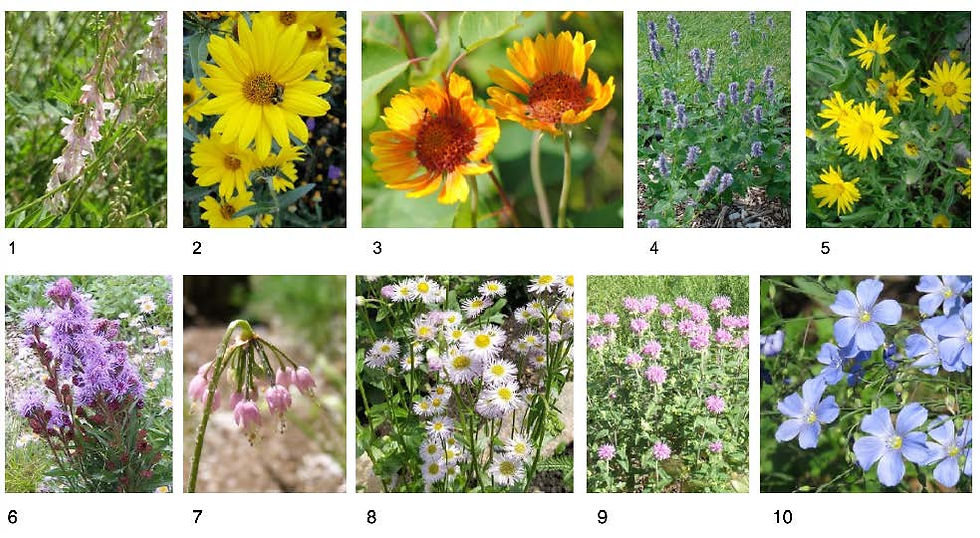Sowing Wildflowers Outside in Spring
- Melanie Watson
- Apr 1, 2022
- 3 min read
by Cherry Dodd
Native wildflowers are perennials, but they are always more of a challenge to grow than garden perennials. One of the reasons is that most native seeds need a period of cold and damp for several weeks before they will germinate. This process is called stratification. However, there are some native flower species that do not need stratification and will germinate without any pretreatment when planted in the spring. They can be planted outside at any time between mid-April and the beginning of June and they include some of our most colourful native flowers.
There are several ways to do this, so I will start with the worst way - sprinkling the seeds on the ground and letting them grow. With this method you will have to sow the seeds quite thickly as they have a low germination rate. This method works well for the “wildflower” mixes sold in big box stores because those seeds are often annuals, and they are chosen to shoot up from seed to flower in as little as six weeks.
Native wildflowers have a completely opposite way of growing. To begin with they have a slow germination rate. The average germination time is two to three weeks, but some seeds can take anywhere from one week to six weeks to emerge. Secondly, native plants are small the first year because they put all their energy into growing a strong root system before bothering with top growth. Because of this slow growth habit they very often get lost under the annual weeds in the garden and end up being weeded out.
So, if you choose this method, here are some tips for success. Plant your seeds somewhere close to a path or the house so that you can keep an eye on them. Remember to label them well so you can spot them as they come up. You could even cut off the rim of an ice cream bucket, or yogurt container, and bury it in the ground around the seeds to mark the spot.
Method No. 2.
Plant your seeds in a 15 cm diameter or larger pot with potting soil, and keep them in a shady spot until they germinate. Put the pot in a shallow container so that you can water from the bottom and keep the soil moist. The advantage of this method is that you know exactly where you planted the seeds, and there are no weeds to confuse you when the seedlings sprout. You will also get a higher germination rate.
Move the pot to a semi-shaded location as soon as germination occurs, and transplant the seedlings to individual pots of garden soil once they have a couple of sets of leaves. When the seedlings are large enough to handle they can be transplanted into the garden. Water them for the first week or two after transplanting.
The method that I prefer is similar. I plant my seeds in a pot as above, and then bury the pot up to the rim in a semi-shaded spot in the garden. Burying the pot in the soil prevents the soil from drying out so quickly.
Here is the list of species that can be sown outdoors as soon as the soil is dry enough. Don't worry about a late spring snowfall. These seeds and seedlings are tough and snow won’t bother them. The only exception is Gaillardia, which requires warmer soils to germinate and is not frost hardy. When it is a mature plant, it often doesn’t emerge above ground until the end of May.
Alpine Hedysarum, Hedysarum alpinum. Soak the seeds of this species in hot water for 12 hours before planting.
CommonTall Sunflower, Helianthus nuttallii
Gaillardia, Gaillardia aristata
Giant Hyssop, Agastache foeniculum
Golden-aster, Heterotheca villosa
Meadow Blazingstar, Liatris ligulistylis
Nodding Onion, Allium cernuum
Smooth Fleabane, Erigeron glabellus
Wild Bergamot, Monarda fistulosa
Wild Blue Flax, Linum lewisii



